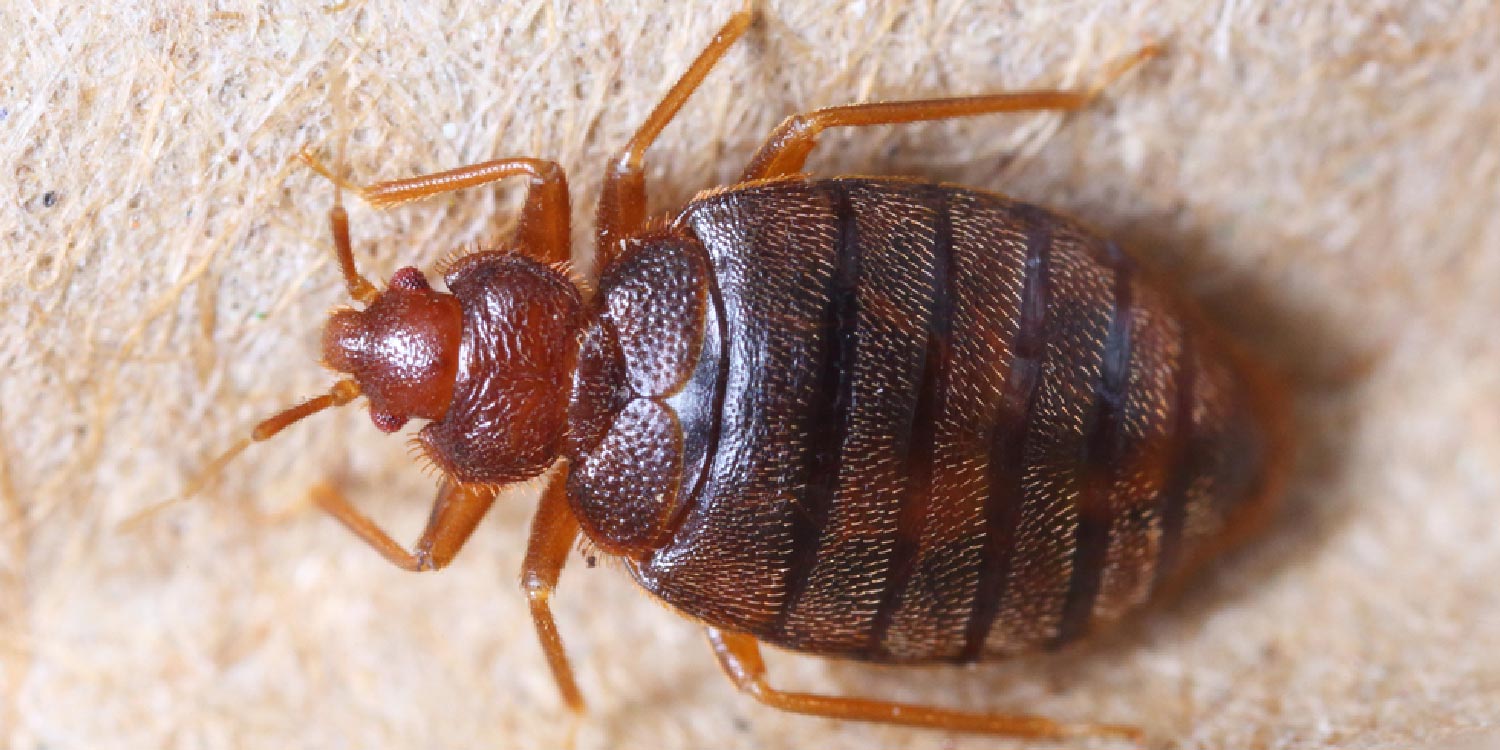Physical appearance/Characteristics
Adult bedbugs are light brown to reddish brown in colour. Their body is flattened almond-shaped and have no hind wings.
They have segmented abdomen with microscopic hairs that give them a banded appearance.
Adults grow to 4-5mm long and 1.5-3mm wide.
Newly hatched nymphs are translucent, lighter in colour and become browner as they moult and reach maturity. Once a nymph consumes blood at any age it becomes bright red with translucent abdomen that fades to brown after several hours then to opaque black after 2 days.
When crashed they emit a characteristic disagreeable odor
Feeding
Bed bugs are parasitic insects that feed on human blood. As the name suggests they prefer warm environments and their common habitat is near or inside beds and beddings or other sleeping areas.
A bed bug pierces the skin of its hosts with a stylet fascicle i.e. beak which cuts a path through the tissue by moving the stylet back and forth to reach an appropriately sized blood vessel then Pressure from the blood vessel itself fills the bug with blood in about 3-5 minutes to become completely engorged.
It then retracts and folds its stylet under the head and returns back to its hiding place to find a mate and avoid getting smashed. At this point it does not feed again until it has completed its moult or has thoroughly digested the blood meal.
Bedbugs prefer biting exposed skin especially face, neck and arms of a sleeping person.
Signs of bedbugs’ infestation
- Dark brown or black Fecal stains on bedding, mattress or surfaces
- Blood stains on your bedding
- Shed bedbug skins, exoskeletons or shells
Signs and Symptoms of bedbug bite
- Bedbug bite usually produces a swelling with no red spot but when many bugs feed on a small area, reddish spots may appear after the swelling subsides.
- Skin rashes
- Allergic symptoms [sensitivity varies from extreme allergic reactions to n reactions at all] like burning and itching.
Control/treatment
Usual hiding places of common bed Bed bugs is in mattresses, bed frames and headboards. They can also move to crevices or protected location within the house and In order to avoid their bites and effects then the only way out is to eradicate these nuisance pests.
Therefore Spray Navigator 200SC at a rate of 50mls in 5 liters of water. Ensuring that you reach the mentioned hiding areas to achieve effective eradication at all growth stages including eggs. Repeat the spray after 7 days.






